Results
-
 £82.30
£82.30All Tuned Up - 120 Famous Tunes for All Occasions (Brass Band Set-US Sizes) PDFs
This unique new resource from BrookWright Music will be an essential part of every band's library! All Tuned Up is designed to cater for ensembles for occasions throughout the year. Tunes are drawn from genres including Classical, Hymns, Folk and Patriotic amongst many others to form a comprehensive book that will cover a wide variety of events such as Weddings, Funerals, Graduation Ceremonies, Parties, Proms, Remembrance, Street Playing and Thanksgiving. Playable by as few as five players but also designed to work for full brass band or wind band, it features flexible parts in a wide variety of transpositions. These excellent arrangements have been expertly created by Andrew Wainwright, David E. Jones, Dean H. Jones and Steven Ponsford. The general harmonic format of All Tuned Up is in five parts, although additional notes have been included to thicken the harmony where more players are available. Therefore, the book will work equally well with larger groups, including full brass bands and wind bands. To view a promotional video please visit www.youtube.com/watch?v=nmodRrXQRRs At the end of the Part 1 Bb book are four a capela tunes for Remembrance/Memorial occasions. This PDF download is for US sizes: Full Score - Letter Size - 11" x 8.5" Band Parts - 7" x 5" Physical copies of the books available from: UK - Individual Books Full Set Brass Band Set USA - www.solidbrassmusic.com/product/all-tuned-up-ensemble-books The Brass Band set includes: Full Score Part 1 Eb (optional) - Soprano Cornet Eb Part 1 Bb - Cornet Bb, Flugel Part 2 Bb - Cornet Bb, Flugel Part 2 Eb - Tenor Horn Part 3 Bb - Baritone, Trombone, Euphonium Part 3 Eb - Tenor Horn Part 4 Bb - Euphonium, Baritone Part 5 C (Bass Clef) - Bass Trombone Part 5 Eb - Bass Eb Part 5 Bb - Bass Bb Percussion (optional) - Various
In stock: Estimated dispatch 1-3 days
-
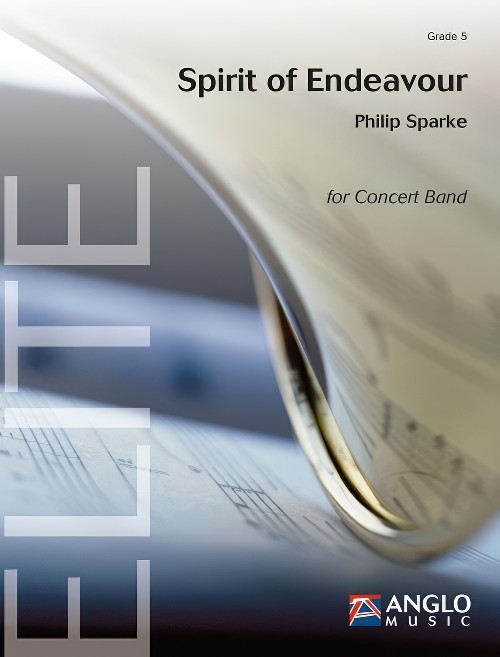 £164.99
£164.99Spirit of Endeavour (Concert Band - Score and Parts) - Sparke, Philip
Spirit of Endeavour is a virtuosic piece of music with a positive musical message. It tells the story of a wind band embracing hard work, friendship, musical excellence, love, marriage and birth, as well as the sad loss of cherished members. Composer Philip Sparke decided to salute the history of the Canadian concert band 'Harmonie de Charlesbourg' with a work that falls into two contrasted sections. One Vision deals with forming the band and the subsequent united desire to create an ensemble espousing the idea of musical perfection. The Pursuit of Excellence salutes the 20 years of hard work of the wind band. This concert work ends with a chorale of the full band, symbolising the fulfilment of a united dream!Duration: 9:15
Estimated dispatch 7-14 working days
-
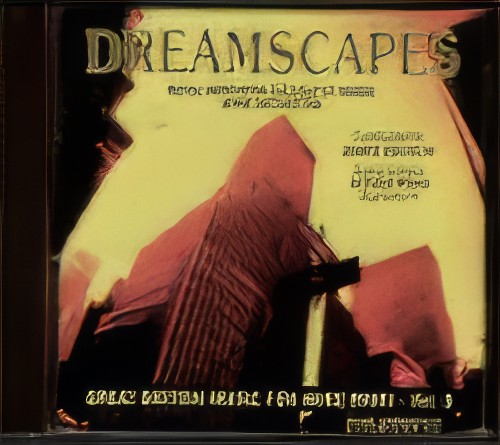 £13.95
£13.95DREAMSCAPES (Royal Northern College of Music Wind Orchestra) (CD)
Great British Music for Wind Band Vol.8 Royal Northern College of Music Wind Orchestra. Conducted by James Gourlay. Includes: Dreamscapes (Martin Ellerby); Rail (Wilfred Josephs); Euphonium Concerto (Martin Ellerby) - soloist: Steven Mead; Mata Hari (Nigel Clarke; Meditations (Martin Ellerby)
Estimated dispatch 7-14 working days
-
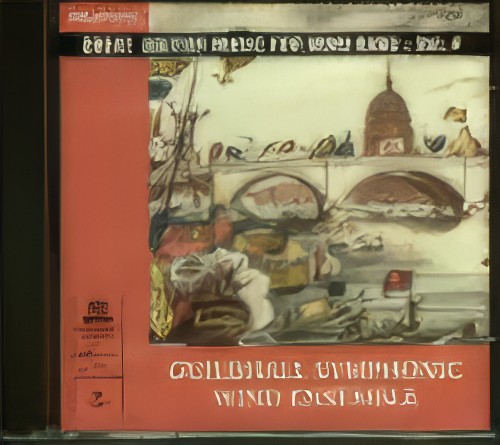 £13.95
£13.95GUILDHALL SYMPHONIC WIND ENSEMBLE (CD)
Great British Music for Wind Band Vol.4 Guildhall Symphonic Wind Ensemble. Director: Peter Gane. Includes: A John Gay Suite (Buxton Orr); Ring Time (Robert Saxton); Concerto for Trombone (Simon Wills) - Soloist: Graham Lee; Canyons (John McCabe)
Estimated dispatch 7-14 working days
-
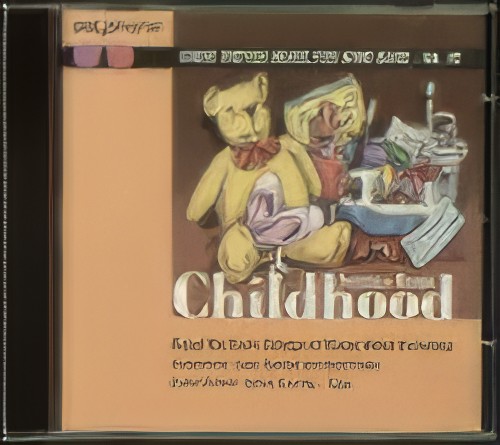 £13.95
£13.95SCENES FROM CHILDHOOD (Royal Northern College of Music Wind Orchestra) (CD)
Great British Music for Wind Band Vol.15 Royal Northern College of Music Wind Orchestra conducted by Clark Rundell and Mark Heron. Guest Soloist: James Gourlay (Tuba).Includes:The Karman Line (Peter Meechan)Fields of Remembrance (Nigel Clarke)HMS Charity (Martin Ellerby)Tuba Concerto (Bruce Fraser)Scenes from Childhood (Kit Turnbull)Pagan Ritual (Rob Wiffin)Elgar Variations (Martin Ellerby)
Estimated dispatch 7-14 working days
-
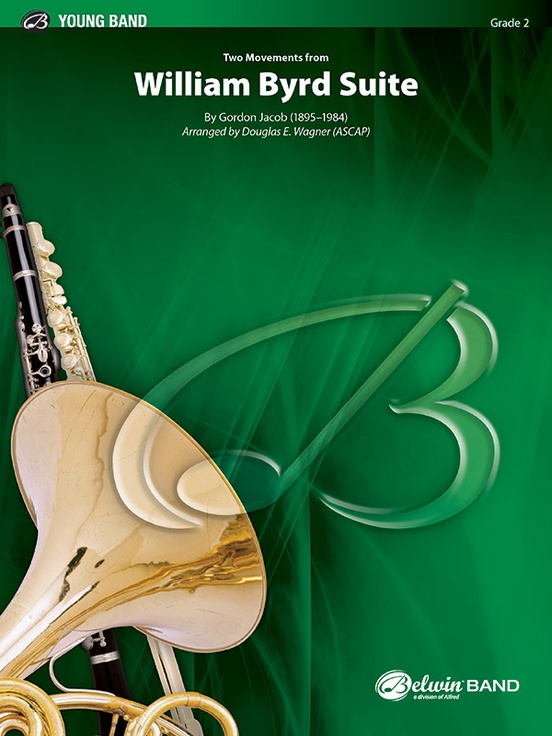 £61.95
£61.95William Byrd Suite, Two Movements from (Concert Band - Score and Parts) - Jacob, Gordon - Wagner, Douglas E.
Of all of Gordon Jacob's major contributions to the British wind band repertoire, the William Byrd Suite (written in 1923) stands as his most-often programmed work. Though originally based on six movements from William Byrd's Fitzwilliam Virginal Book, this setting for developing band incorporates two contrasting movements including "The Earle of Oxford's Marche" and "Wolsey's Wilde." Like Jacob's wind band work, the music is not a mere transcription from the original keyboard collection, but rather stylized with his own inventive musical spirit for modern concert band. A wealth of material here that opens doors to teachable moments as musical textures (dynamic contrasts, articulations, scoring options) are continually changing. Bravo! Duration: 2.30
Estimated dispatch 7-14 working days
-
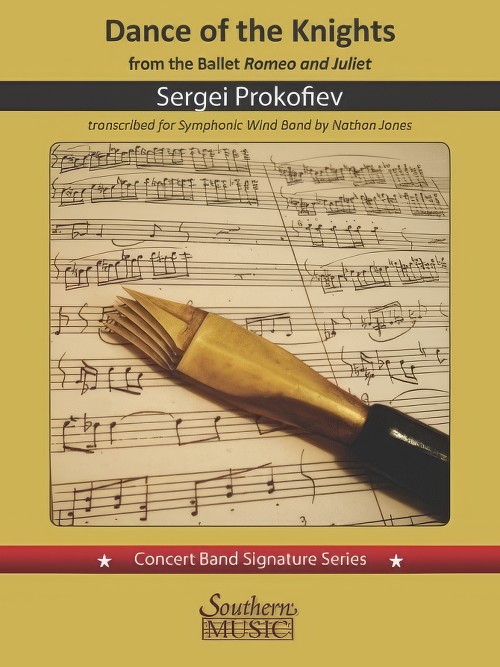 £104.99
£104.99Dance of the Knights (from Romeo and Juliet) (Concert Band - Score and Parts) - Prokofiev, Sergei - Jones, Nathan
This publication marks the first-ever symphonic wind band edition of the Dance of the Knights, from Scene 2 Capulet's Ball of Prokofiev's ballet Romeo and Juliet. "[The ballet] led to one of the most beloved dance works in the repertory and a series of famous orchestral suites... but the celebrated legacy of Romeo and Juliet belies its tortured history: It left Prokofiev broken and emerged from a period that left many of his colleages dead." (New York Times). Nathan Jones' scoring for symphonic wind band faithfully captures the magic of the original orchestraion of this famous work, which has been heard in numerous films and TV shows, including The Simpsons, Warm Machine, Good Morning Britain and Gotham, among many others. This piece is an ideal opener or closer for intermediate to advanced band.Duration: 5.30
Estimated dispatch 7-14 working days
-
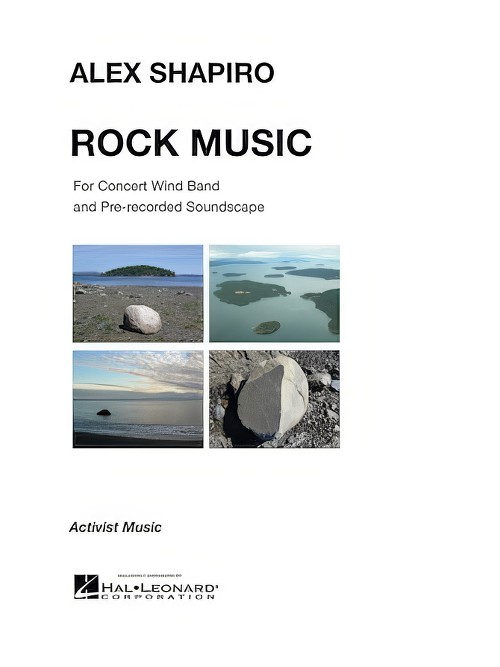 £76.99
£76.99Rock Music (Concert Band - Score and Parts) - Shapiro, Alex
For Concert Wind Band and Pre-Recorded Soundscapes.Alex Shapiro first brought electroacoustic music - paired with using an everyday object as an instrument - to middle school bands with her 2010 piece, PAPER CUT. Now comes ROCK MUSIC, possibly the very first geo-electroacoustic minimalist band piece, largely devoid of melody, and of rhythm. Conceptual and atmospheric, the music features compelling textures from instruments, voices, and rocks that weave a wind band into a piece of sonic fabric stretched across linear time. As the notes slowly crawl, melt, and scrape over a sonic landscape in random, irregular ways, we're connected to the ancient glaciers which carved the world we know, and which we strive to protect. Like PAPER CUT, ROCK MUSIC can be equally appreciated by mature bands and their audiences, as well. To perform ROCK MUSIC, you'll need an audio system capable of playing the prerecorded audio tracks from a laptop computer via a small digital audio interface connected to an audio mixer. Download information is provided in the printed piece.Duration: 4:15
Estimated dispatch 7-14 working days
-
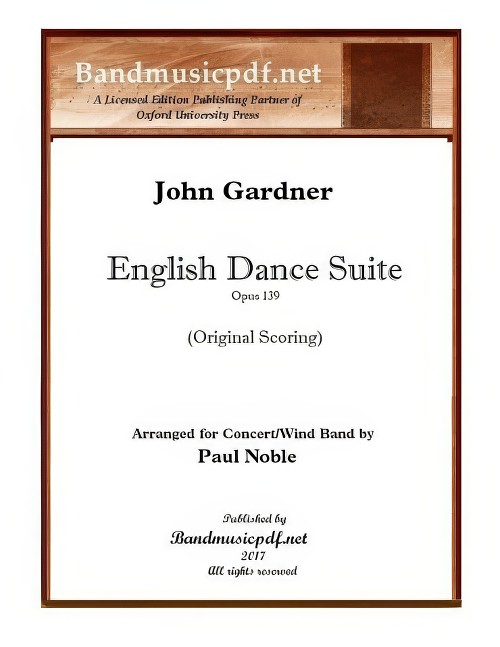 £495.00
£495.00English Dance Suite (Concert Band - Score and Parts) - Gardner, John - Noble, Paul
Original Scoring. Arranged for the modern Concert/Wind Band, scored for three trumpets, reasonable doubling of parts where the original musical effect is not altered so that players can have a more responsible and enjoyable experience, more legible parts with less doubling on one staff, etc. The piece is offered either as a complete suite of seven movements, and also as seven individual movements which may be purchased independently. The English Dance Suite was originally composed by John Gardner for Wind Band, and has been re-set for the modern Concert Band instrumentation. Both the original version, edited and type-set by Paul Noble, and this arrangement are first editions now available for purchase to bands around the world. The set of seven Renaissance dances depict John Gardner's love of Scottish music, the Renaissance heritage, and some of his own mischievous approach to music. The first movement, Chacony on a Golden Theme, reminiscent of the Allegro movement of Purcell's Golden Sonata, is much used as a vehicle for variation on a repeated short harmonic progression, often involving a fairly short repetitive bass-line which offered a compositional outline for variation, decoration, figuration and melodic invention. In this it closely resembles the passacaglia. The Alman originated in the 16th century as a duple metere dance of moderate tempo, already considered very old, with a characteristic double-knocking upbeat of one or occasionally three sixteenth notes. It appears to have derived from a German dance but no identifiable dance and no German dance instructions from this era survive. The Hornpipe, usually in 3/2 dance rhythm, is an Irish, Scottish and English dance. It is done in hard shoes, which are used to help keep track of how the dancer keeps in time. There are two variations of the hornpipe dance: fast and slow. Usually, more experienced dancers will do the slow hornpipe but younger dancers will start out with the fast hornpipe and then switch in later years. The Corranto is a 16th-century court dance characterized by short advances and retreats, in quick triple time. The Volta (Italian: the turn or turning) is an anglicised name from the later Renaissance. Its main figure consisted of a turn and lift in a sort of closed position. The Pavan is a slow processional dance common in Europe during the 16th century. The Reel, indigenous to Scotland, consists largely of quaver (eighth note) movement with an accent on the first and third beats of the bar.
Estimated dispatch 7-14 working days
-
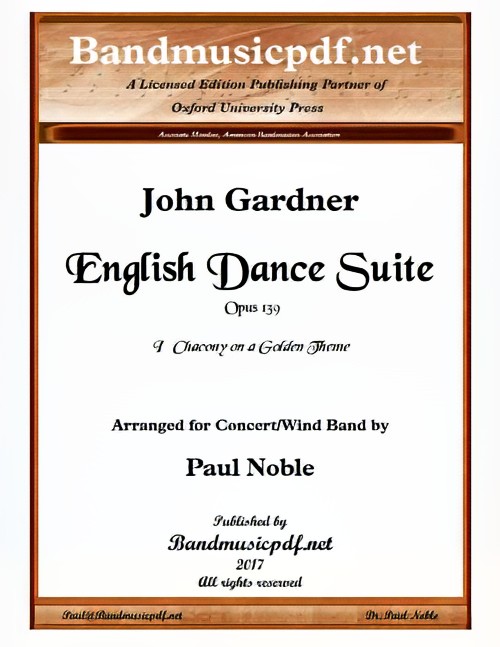 £125.00
£125.00English Dance Suite - I. Chacony on a Golden Theme (Concert Band - Score and Parts) - Gardner, John - Noble, Paul
Arranged for the modern Concert/Wind Band, scored for three trumpets, reasonable doubling of parts where the original musical effect is not altered so that players can have a more responsible and enjoyable experience, more legible parts with less doubling on one staff, etc. The piece is offered either as a complete suite of seven movements, and also as seven individual movements which may be purchased independently. The English Dance Suite was originally composed by John Gardner for Wind Band, and has been re-set for the modern Concert Band instrumentation. Both the original version, edited and type-set by Paul Noble, and this arrangement are first editions now available for purchase to bands around the world. The set of seven Renaissance dances depict John Gardner's love of Scottish music, the Renaissance heritage, and some of his own mischievous approach to music. The first movement, Chacony on a Golden Theme, reminiscent of the Allegro movement of Purcell's Golden Sonata, is much used as a vehicle for variation on a repeated short harmonic progression, often involving a fairly short repetitive bass-line which offered a compositional outline for variation, decoration, figuration and melodic invention. In this it closely resembles the passacaglia. The Alman originated in the 16th century as a duple metere dance of moderate tempo, already considered very old, with a characteristic double-knocking upbeat of one or occasionally three sixteenth notes. It appears to have derived from a German dance but no identifiable dance and no German dance instructions from this era survive. The Hornpipe, usually in 3/2 dance rhythm, is an Irish, Scottish and English dance. It is done in hard shoes, which are used to help keep track of how the dancer keeps in time. There are two variations of the hornpipe dance: fast and slow. Usually, more experienced dancers will do the slow hornpipe but younger dancers will start out with the fast hornpipe and then switch in later years. The Corranto is a 16th-century court dance characterized by short advances and retreats, in quick triple time. The Volta (Italian: the turn or turning) is an anglicised name from the later Renaissance. Its main figure consisted of a turn and lift in a sort of closed position. The Pavan is a slow processional dance common in Europe during the 16th century. The Reel, indigenous to Scotland, consists largely of quaver (eighth note) movement with an accent on the first and third beats of the bar.
Estimated dispatch 7-14 working days
